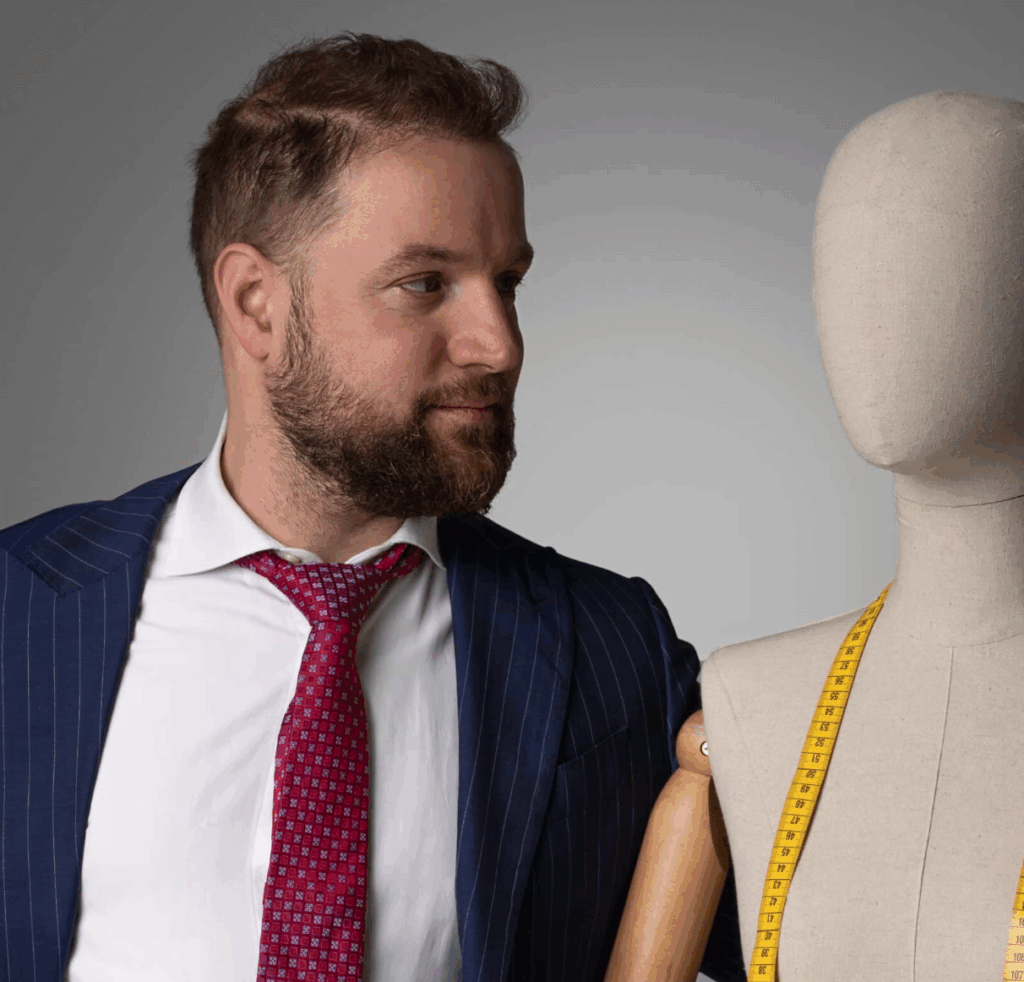Luxury consumers rarely fit into simple stereotypes. Brands seeking lasting impact must look deeper than age, income, or geography. Over 60 percent of luxury purchase decisions are driven by emotional and psychological factors rather than practical need. This article shows you how to unlock these hidden motivations using strategic consumer profiling, data-driven insights, and real-world testing methods designed for the complexities of the high-end market.
Table of Contents
- Step 1: Define Strategic Consumer Profiles For Your Market
- Step 2: Gather Data Using Luxury-Specific Channels
- Step 3: Analyze Psychological Motivators And Purchase Triggers
- Step 4: Segment High-Value Audiences For Tailored Strategies
- Step 5: Validate Findings With Real-World Luxury Market Tests
Quick Summary
| Key Point | Explanation |
|---|---|
| 1. Define strategic consumer profiles | Understand psychological motivations, lifestyles, and values that drive luxury purchasing decisions. |
| 2. Use luxury-specific data collection methods | Employ advanced strategies like mobile ethnography and virtual store research to gather rich consumer insights. |
| 3. Analyze deep psychological motivators | Focus on emotional drivers that turn potential customers into loyal brand enthusiasts. |
| 4. Segment high-value audiences effectively | Create dynamic profiles that capture unique narratives of aspiration and identity among luxury consumers. |
| 5. Validate insights with real-world tests | Implement market experiments to confirm findings and stay responsive to evolving consumer behaviors. |
Step 1: Define strategic consumer profiles for your market
Defining strategic consumer profiles represents a critical foundation for luxury brand marketing success. You will map out detailed audience segments that go beyond basic demographics to understand the psychological motivations and lifestyle dynamics driving purchase decisions.
Leveraging psychographic segmentation frameworks like VALS can transform your consumer understanding. According to Klaus Heine, luxury consumer behavior involves complex psychological mapping that transcends traditional market research approaches. This means diving deep into value systems, aspirational identities, and lifestyle preferences that distinguish your potential customers.
Start by conducting comprehensive research through multiple channels: qualitative interviews, quantitative surveys, social media listening, and advanced analytics. Your goal is creating 3-5 nuanced consumer archetypes that represent your target market. Each profile should include:
- Precise psychographic characteristics
- Lifestyle preferences
- Purchasing motivations
- Communication preferences
- Potential engagement touchpoints
These detailed profiles will become your strategic compass for designing marketing strategies, product development, and customer experience initiatives that resonate authentically with your luxury market segments.
Pro Tip: Remember that luxury consumers are not monolithic. Your profiles should capture subtle distinctions and emotional drivers that transform transactional interactions into meaningful brand relationships.
Step 2: Gather data using luxury-specific channels
Mastering data collection in the luxury market requires sophisticated and nuanced research methodologies that go beyond traditional consumer insights approaches. Your goal is to capture the complex psychological and emotional dimensions that drive high-end consumer behavior.
Mobile ethnography offers an innovative approach to understanding luxury consumer experiences in real time. By leveraging participants mobile devices, you can gather rich contextual data about how affluent consumers interact with brands across different environments. Similarly, virtual store research provides a controlled yet dynamic method for studying consumer decision making processes in simulated luxury retail settings.
To gather comprehensive luxury consumer data effectively, implement a multi channel research strategy:
- Conduct in depth interviews with high net worth individuals
- Use advanced digital tracking technologies
- Engage luxury focused social media listening platforms
- Analyze exclusive digital communities and forums
- Leverage professional networking platforms
Your data collection should prioritize qualitative insights that reveal emotional motivations and aspirational narratives behind purchasing decisions.
 These nuanced perspectives will help you develop more authentic and resonant marketing strategies.
These nuanced perspectives will help you develop more authentic and resonant marketing strategies.
Pro Tip: Always maintain strict confidentiality and obtain proper consent when collecting personal consumer data. Luxury consumers value privacy and discretion above all else.
Step 3: Analyze psychological motivators and purchase triggers
Understanding the intricate psychological landscape of luxury consumer behavior requires a nuanced approach that goes beyond surface level demographics. Your objective is to uncover the deep emotional and aspirational drivers that transform a potential customer into a loyal brand enthusiast.
Research from the International Conference on Marketing and Business Development reveals critical psychological motivators in luxury purchasing. These include complex factors such as materialism, price quality perceptions, social status aspirations, and brand trust. Each of these elements intertwines to create a sophisticated decision making process that luxury brands must carefully decode.
To effectively analyze these psychological motivators, implement a comprehensive research strategy:
- Conduct in depth psychological interviews
- Map emotional response patterns
- Analyze symbolic value perceptions
- Evaluate status signaling motivations
- Investigate personal identity projection mechanisms
Your analysis should focus on understanding how luxury products serve as more than material possessions they are powerful tools for self expression, social positioning, and personal narrative construction. By mapping these complex psychological landscapes, you can develop marketing strategies that resonate at a profound emotional level.

Pro Tip: Remember that luxury consumers do not purchase products they invest in experiences and identity narratives. Your psychological analysis must go beyond transactional insights and explore the deeper emotional territories of aspiration and self actualization.
Step 4: Segment high-value audiences for tailored strategies
Successfully segmenting high-value audiences requires a sophisticated approach that transforms raw consumer data into actionable marketing insights. Your mission is to create precise audience profiles that capture the nuanced motivations driving luxury consumer behavior.
The VALS framework provides a powerful method for categorizing consumers into distinct psychographic profiles. Complementing this approach, research from Topmost Ads highlights emerging consumer archetypes like ‘Innovators’ and ‘Ethical Consumers’ that can help luxury brands develop more targeted strategies.
To create meaningful audience segments, implement a multidimensional approach:
- Analyze behavioral data across multiple touchpoints
- Identify core motivational drivers
- Map lifestyle and value system characteristics
- Develop nuanced persona narratives
- Create flexible segmentation models
Your segmentation should go beyond traditional demographic markers. Focus on understanding the deeper psychological landscapes that inform purchasing decisions. Each segment represents a unique narrative of aspiration, identity, and personal expression.
Pro Tip: Avoid static segmentation. Luxury consumers evolve rapidly. Build adaptive models that can quickly recalibrate as consumer motivations shift and new trends emerge.
Step 5: Validate findings with real-world luxury market tests
Validating consumer behavior insights requires a strategic approach that moves beyond theoretical models into practical market testing. Your objective is to transform research hypotheses into actionable strategies that resonate with high-end consumers.
Virtual store research provides an innovative method for simulating retail environments and testing marketing strategies before full implementation. Complementing this approach, hedonic regression offers a sophisticated technique for analyzing product characteristics and consumer value perceptions in luxury markets.
To effectively validate your findings, implement a comprehensive testing strategy:
- Conduct controlled market experiments
- Use advanced digital simulation platforms
- Create micro targeted pilot campaigns
- Analyze granular consumer response metrics
- Iterate and refine research insights
Your validation process should embrace complexity. Luxury consumers are not monolithic they represent intricate networks of aspirations, social signals, and personal narratives. Each test should peel back layers of psychological motivation revealing the nuanced drivers behind purchasing decisions.
Pro Tip: Treat market validation as an ongoing dialogue. The most successful luxury brands view consumer research as a continuous conversation never a completed task. Remain agile and prepared to rapidly recalibrate your understanding as market dynamics evolve.
Unlock the Power of Consumer Psychology for Luxury Brands
Are you ready to transform complex luxury consumer insights into marketing strategies that truly connect? Understanding the emotional motivators and psychological drivers behind high-end purchasing decisions requires specialized expertise. If your brand struggles to capture nuanced audience segments or translate deep consumer emotions into compelling campaigns, the solutions highlighted in “How to Analyze Consumer Behavior for Luxury Brands” are just the beginning.
Corrado Manenti combines an academic background in psychology with hands-on experience in luxury marketing to help brands like yours nail psychographic segmentation, identify purchasing triggers, and craft highly personalized strategies. His Marketing basado en la psicología approach goes beyond surface-level data to unlock why your customers buy and how to inspire lasting brand loyalty.

Take the first step in elevating your fashion or luxury brand with a proven expert who understands the unique challenges you face. Explore Corrado Manenti’s Fashion and Luxury Consulting services and visit his main website now to start designing marketing strategies that resonate deeply and deliver measurable results today.
Frequently Asked Questions
How can I define consumer profiles for luxury brands?
To define consumer profiles for luxury brands, conduct thorough research using qualitative interviews, quantitative surveys, and social media listening. Aim to create 3-5 nuanced archetypes that encompass psychographics, lifestyle preferences, and purchasing motivations.
What types of data should I gather to analyze luxury consumer behavior?
Gather qualitative insights from in-depth interviews with affluent individuals, advanced tracking technologies, and luxury-focused social media platforms. This will help capture the emotional and aspirational narratives that drive purchasing decisions.
How do I analyze psychological motivators in luxury purchasing?
To analyze psychological motivators, implement in-depth interviews and emotional response patterns that reveal motivations like materialism and status aspirations. Focus on understanding how these factors contribute to consumer decision-making in luxury markets.
What are effective methods for segmenting high-value luxury audiences?
Effectively segment high-value audiences by analyzing behavioral data and identifying core motivational drivers. Create flexible persona narratives that capture the unique aspirations and identity expressions driving purchasing behaviors.
How can I validate my findings on luxury consumer behavior?
Validate your insights by conducting controlled market experiments and using digital simulation platforms to test marketing strategies. Iterate your research based on consumer responses to refine your understanding of their decision-making processes.
Why is continuous consumer research important for luxury brands?
Continuous consumer research is vital as luxury consumers’ motivations and preferences evolve quickly. Treat research as an ongoing dialogue, allowing your strategies to adapt based on changing market dynamics and consumer insights.
Recommended
- Consumer Behavior Analysis: Complete Guide for Luxury Brands – Corrado Manenti
- Optimizing Consumer Behavior Analysis Workflow for Luxury Brands – Corrado Manenti
- Blog – Corrado Manenti
- 7 Insights into Luxury Consumer Behavior Lists – Corrado Manenti
- Selling Luxury
- Understanding Luxury Fragrance Defined: A Deep Dive



